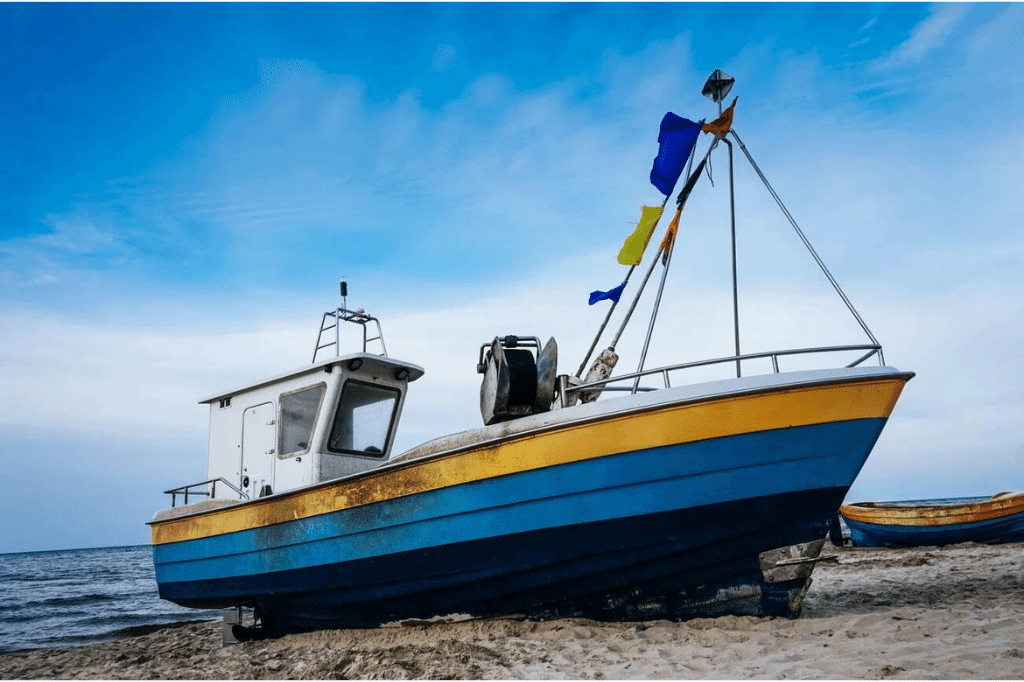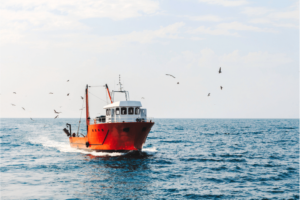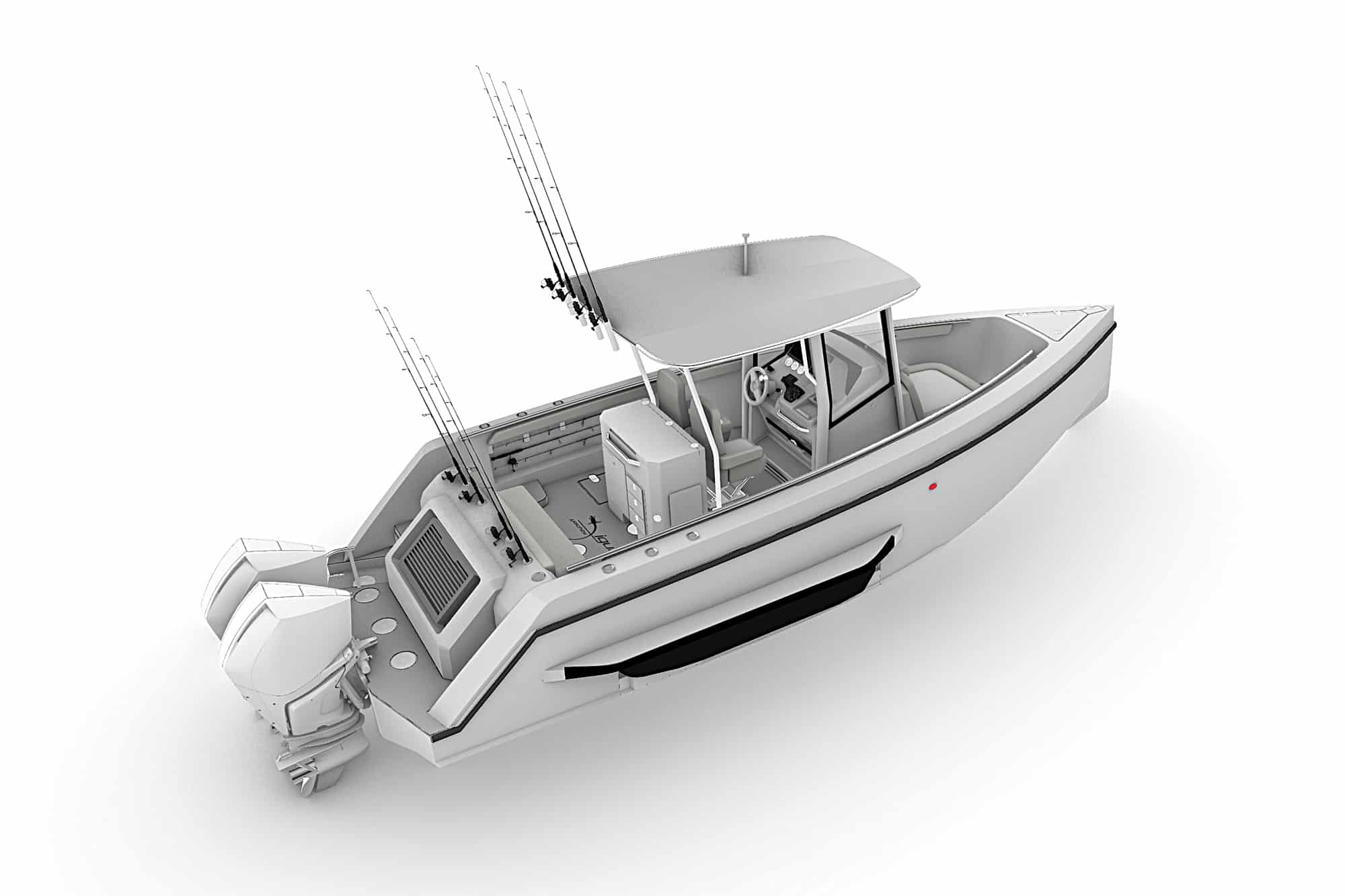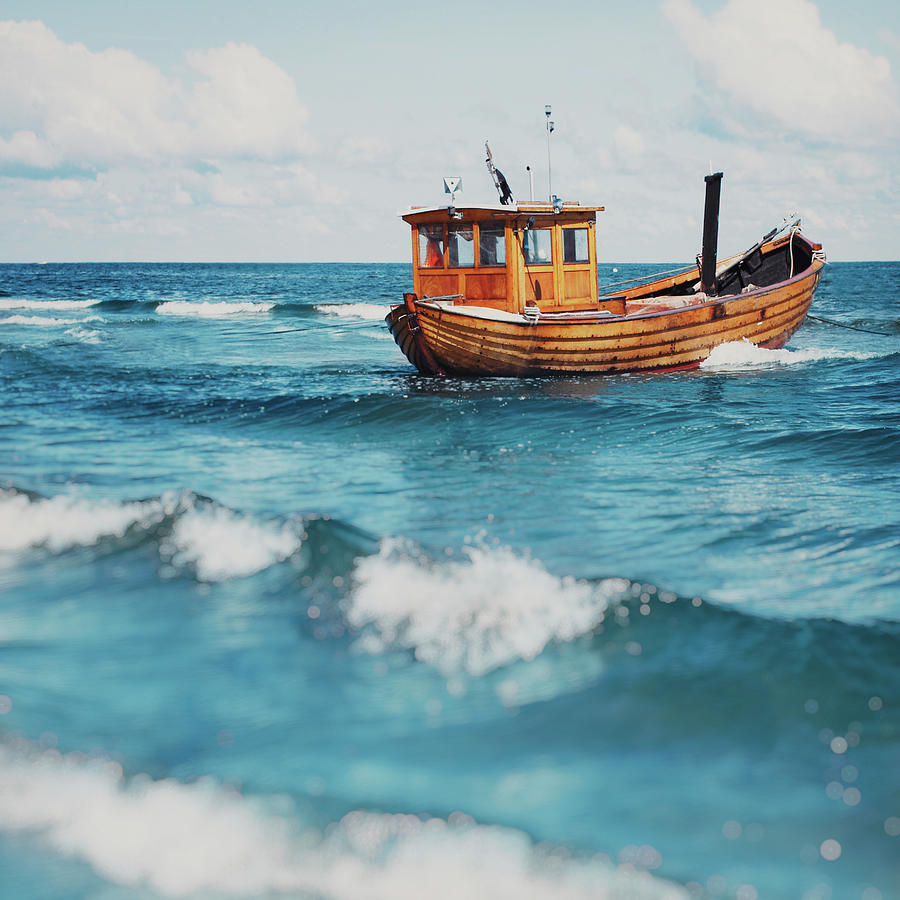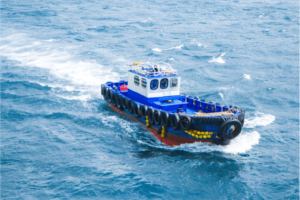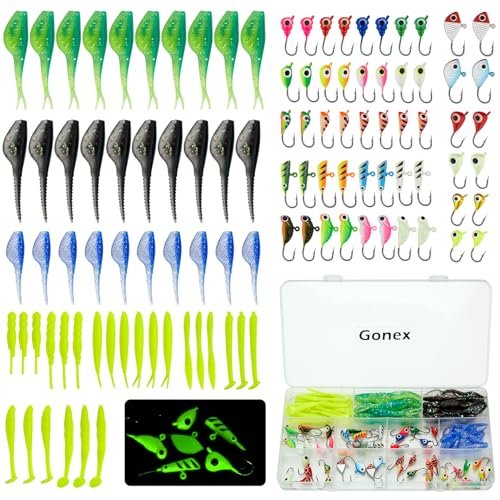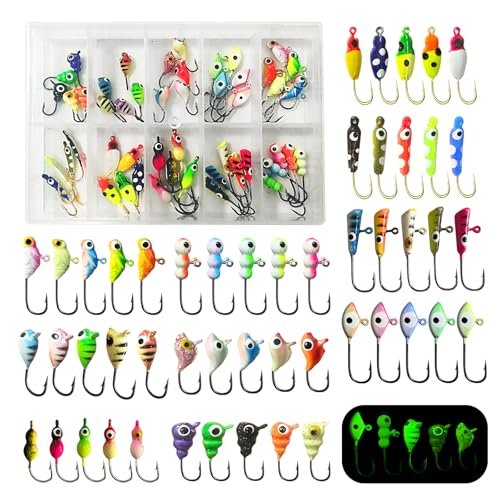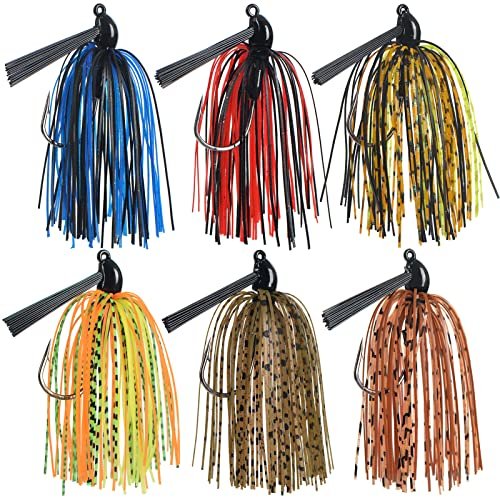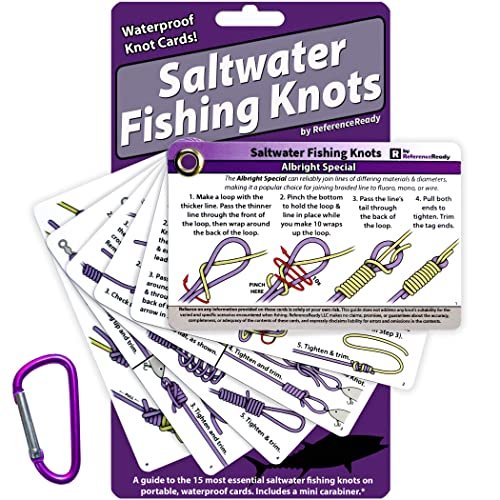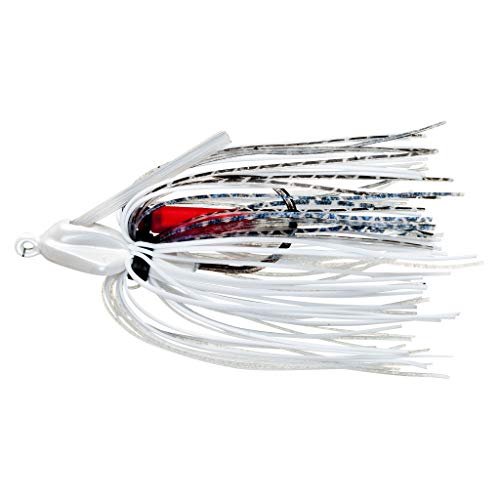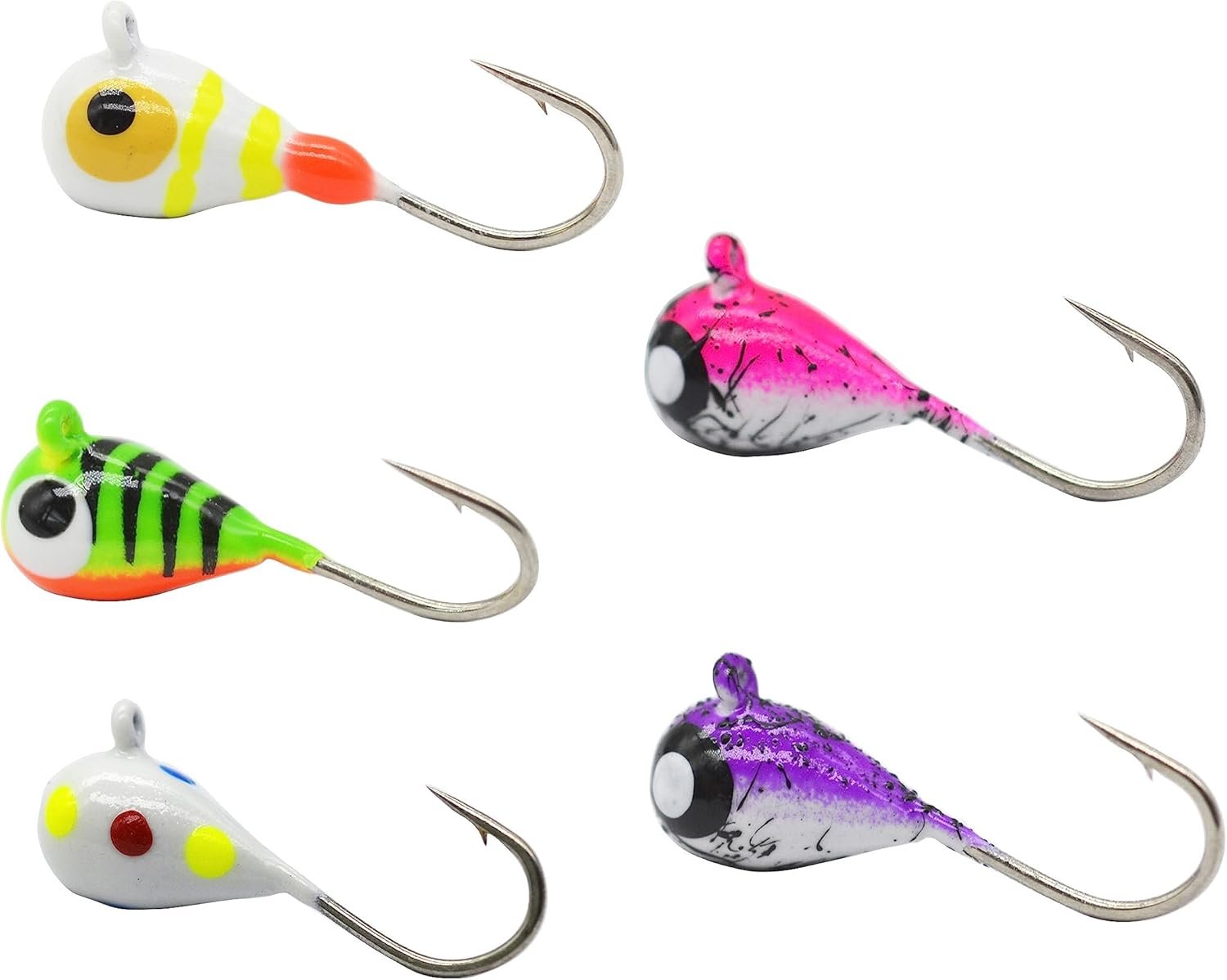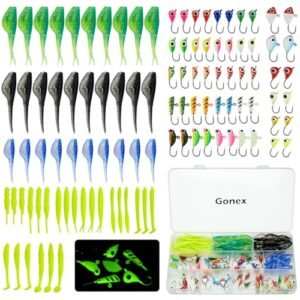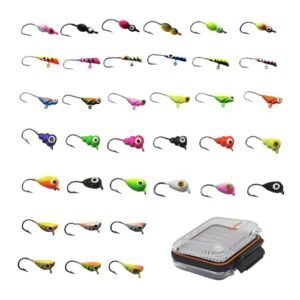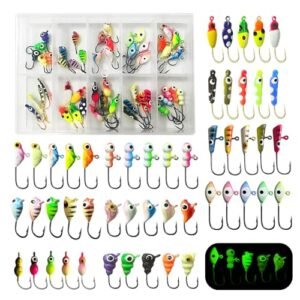Fisher boats offer a perfect blend of durability and versatility, making them a popular choice among boating enthusiasts. Designed for various water activities, these boats provide a sturdy platform for fishing, family outings, and leisurely cruises. Their robust construction ensures long-lasting performance even in challenging conditions.
With user-friendly features and comfortable seating, Fisher boats cater to both novice and experienced boaters. They come in different sizes and configurations to suit individual preferences and needs. Whether navigating calm lakes or choppy seas, Fisher boats deliver reliable and enjoyable experiences on the water. This makes them a valuable investment for anyone passionate about boating.

Setting Sail On Your Fishing Journey
Fishing is a fun and exciting hobby. Setting sail on your fishing journey is an adventure filled with joy. You need the right boat and gear. This guide will help you get started.
Choosing The Right Fisher Boat
Picking the right boat is crucial. The right fisher boat makes your trip safe and enjoyable. Consider these factors:
| Factor | Details |
|---|---|
| Size | Small boats are easier to handle. Larger boats offer more space. |
| Material | Aluminium boats are durable. Fiberglass boats are sleek. |
| Type | Flat-bottom boats are stable. V-hull boats cut through waves. |
Essential Gear For Your First Trip
Having the right gear ensures a successful fishing trip. Here is a list of essential items:
- Fishing Rod and Reel
- Fishing Line
- Hooks and Bait
- Life Jacket
- First Aid Kit
- Cooler for Your Catch
- Sun Protection
- Fishing License
Safety is important. Always wear a life jacket. Bring a first aid kit. Enjoy your fishing journey with the right boat and gear.
Casting The Line: Basic Techniques
Fishing from a boat can be a thrilling experience. Casting the line properly is key to success. In this section, we’ll explore basic techniques for casting your line. These skills will help you catch more fish and enjoy your time on the water.
Mastering The Overhead Cast
The overhead cast is a fundamental technique. It is simple but requires practice. Follow these steps to master it:
- Hold the rod with both hands.
- Position your body facing the target area.
- Lift the rod behind your head.
- Swing the rod forward smoothly.
- Release the line when the rod points at the target.
Practice in an open area first. This helps you avoid obstacles. Over time, your casts will become more accurate.
The Art Of Trolling For Beginners
Trolling is another popular technique. It involves moving the boat slowly while dragging the bait. Here’s how beginners can get started:
| Step | Description |
|---|---|
| 1 | Choose the right lure for the fish you want to catch. |
| 2 | Attach the lure securely to your line. |
| 3 | Set your boat speed to a slow pace. |
| 4 | Cast your line behind the boat. |
| 5 | Monitor your rod for any bites. |
Trolling covers more water and increases your chances of catching fish. Be patient and watchful. Soon, you will enjoy the thrill of a catch.
Understanding Local Fish Species
Fisher Boat enthusiasts often seek to understand the local fish species. Knowing the types of fish in your area helps you catch more fish. This section provides insights into identifying common catches and their habitats and behaviours.
Identifying Common Catches
Many fish species are common in local waters. Here are some of the most frequent catches:
- Trout: Known for their colourful spots. They are often found in freshwater streams.
- Salmon: Recognizable by their silver scales. They thrive in both fresh and saltwater.
- Bass: Identified by their large mouths. They usually inhabit lakes and rivers.
Identifying these fish can make your fishing trip more successful. Use a fish guidebook for more detailed identification.
Habitats And Behaviours
Understanding the habitats and behaviours of local fish is crucial. This knowledge helps you find and catch fish more effectively.
| Fish Species | Habitat | Behaviour |
|---|---|---|
| Trout | Freshwater streams and rivers | Active during early morning and late evening |
| Salmon | Both fresh and saltwater | Migrate upstream to spawn |
| Bass | Lakes and rivers | Often found near underwater structures |
Trout prefer cool, clean water and are most active in the early morning and late evening. Salmon migrate upstream to spawn, making them easier to find during migration seasons. Bass are usually near underwater structures like rocks and logs. This is because they use these structures for cover and hunting spots.
Understanding these patterns increases your chances of a successful fishing trip. Always observe the local environment and adjust your fishing techniques accordingly.
Navigating Water Safety
Ensuring safety on a Fisher Boat is crucial for a fun and secure experience. This section will cover key aspects of water safety. Knowing these can keep you and your loved ones safe.
Life Jacket Essentials
Life jackets are non-negotiable for water safety. Everyone on board must have a life jacket. Ensure the jackets fit properly. A loose jacket can be dangerous.
| Life Jacket Type | Purpose | Best For |
|---|---|---|
| Type I | Offshore Life Jacket | Rough waters, open ocean |
| Type II | Near-Shore Buoyant Vest | Calm inland waters |
| Type III | Flotation Aid | General boating, water sports |
Check your life jackets regularly. Ensure they are in good condition. A damaged jacket will not provide adequate safety.
Emergency Protocols On Board
Knowing emergency protocols is vital. These steps can save lives during a crisis.
- Man Overboard: Shout “Man overboard!” and throw a life buoy.
- Fire: Use the fire extinguisher. Move away from the fire.
- Medical Emergency: Call for help using the radio. Provide first aid.
- Engine Failure: Drop anchor. Signal for assistance.
Have a pre-planned emergency drill. Practice regularly with everyone on board. This ensures everyone knows what to do in a real emergency.
Equip your boat with necessary safety gear:
- First aid kit
- Fire extinguishers
- Radio or communication devices
- Signal flares
Regular checks on your safety gear are essential. Ensure all equipment is in working order.
Weather Wisdom For Anglers
Understanding the weather is crucial for a successful fishing trip. Weather changes can affect fish behaviour and safety. This section will help you become a weather-savvy angler.
Reading Weather Patterns
Reading weather patterns is essential for fishing. Check the sky for cloud types. Cumulus clouds often mean good weather, while nimbus clouds suggest rain. Look at the wind direction. East winds can bring storms. West winds often bring clear skies. Use a barometer. Falling pressure usually means bad weather. Rising pressure often means good weather.
| Weather Element | Indication |
|---|---|
| Cumulus Clouds | Good weather |
| Nimbus Clouds | Rain |
| East Wind | Storms |
| West Wind | Clear Skies |
| Falling Pressure | Bad Weather |
| Rising Pressure | Good Weather |
Best Times To Set Out
The best times to fish are early morning and late afternoon. Fish are more active during these times. Check the tides. High tide can bring fish closer to shore. Full moons can also affect fish activity. Use a lunar calendar to plan your trip. Avoid fishing during extreme weather conditions. Safety should always come first.
- Early morning
- Late afternoon
- High tide
- Full moon
- Avoid extreme weather
Bait And Tackle Tips
Fishing from a Fisher Boat can be a thrilling experience. To make your fishing adventure successful, choosing the right bait and tackle is crucial. Here are some essential tips to help you get started.
Selecting The Right Bait
Choosing the right bait can make a big difference in your fishing success. Different fish species are attracted to different types of bait. Always use fresh bait to attract more fish.
Here is a simple table to guide you:
| Fish Type | Bait |
|---|---|
| Trout | Worms, Insects |
| Bass | Crawfish, Minnows |
| Catfish | Chicken Liver, Stink Bait |
Using the right bait increases your chances of catching the fish you want. It is crucial to know the fish species in your area.
Tackle Box Must-haves
A well-equipped tackle box is essential for any fishing trip. Here are some must-have items for your tackle box:
- Hooks: Various sizes for different fish.
- Sinkers: Helps your bait sink to the right depth.
- Bobbers: Keeps your bait at the desired depth.
- Line: Strong and durable for different conditions.
- Scissors or Clippers: For cutting the line.
Having these items ensures you are prepared for any fishing situation. Keep your tackle box organized for easy access.
Conservation And Sustainable Fishing
Conservation and sustainable fishing are vital for the health of our oceans. Fisher Boat is dedicated to preserving marine life. This helps future generations enjoy the beauty of the sea. By following responsible fishing practices, we protect fish populations and their habitats.
Catch And Release Practices
Catch and release is a key practice in sustainable fishing. It involves catching fish and then releasing them back into the water. This helps maintain fish populations. It also ensures future fishers can enjoy the sport.
- Use barbless hooks to reduce injury to fish.
- Handle fish gently to avoid damaging their scales or fins.
- Release fish quickly to minimize stress.
These steps help fish survive after being caught. They also ensure the health of the marine ecosystem.
Respecting Marine Life
Respecting marine life is crucial. Fisher Boat encourages all fishers to follow these guidelines:
- Avoid fishing in protected areas. These zones are vital for breeding and growth.
- Do not litter. Trash can harm marine animals.
- Use eco-friendly bait. This reduces the impact on the environment.
By respecting marine life, fishers help protect the ocean. This ensures a thriving habitat for all sea creatures.
| Action | Benefit |
|---|---|
| Use barbless hooks | Reduces injury to fish |
| Release fish quickly | Minimizes stress on fish |
| Avoid protected areas | Protects breeding zones |
From Hook To Cook: Handling Your Catch
Catching fish is an exciting part of boating. But the real fun starts after you catch your fish. Handling, cleaning, and cooking your catch is rewarding. Let’s dive into the steps.
Cleaning And Storing Fish
Cleaning your fish properly is essential. This keeps it fresh and tasty. Follow these steps to clean your fish:
- Rinse the fish under cold water.
- Remove the scales with a fish scaler or knife.
- Cut open the belly from head to tail.
- Remove the guts and rinse the cavity well.
Storing your fish correctly ensures it stays fresh. Use these tips:
- Keep fish on ice immediately after cleaning.
- Store fish in a cooler with plenty of ice.
- Use a plastic bag to prevent contamination.
Simple Recipes For The First-time Angler
Cooking your catch can be simple and fun. Here are two easy recipes:
| Recipe | Ingredients | Steps |
|---|---|---|
| Grilled Fish Fillets |
|
|
| Pan-Fried Fish |
|
|
Joining The Angler Community
Becoming part of the angler community is an exciting journey. Whether you’re a seasoned fisher or just starting, connecting with others enhances your experience. You will learn new techniques, share stories, and build lasting friendships. Here are some ways to dive into this vibrant community.
Local Clubs And Groups
Many towns have local fishing clubs. These clubs are fantastic for meeting fellow anglers. They offer valuable resources and a sense of camaraderie. Joining a club provides access to:
- Fishing Tips: Learn from experienced fishers.
- Social Events: Participate in meetups and fishing trips.
- Workshops: Improve your skills with hands-on sessions.
Check out your local community center or online forums to find clubs near you. Being part of a group enhances your fishing adventures.
Fishing Competitions For Amateurs
Fishing competitions are thrilling and educational. Amateur contests are perfect for beginners. They offer a chance to test your skills in a friendly environment. Some benefits of joining competitions include:
| Benefit | Details |
|---|---|
| Experience | Gain practical knowledge and confidence. |
| Prizes | Win exciting rewards and recognition. |
| Networking | Meet other anglers and make connections. |
Look for local amateur fishing competitions. They are often advertised in newspapers and online. Participating in these events can boost your fishing journey.
Joining the angler community opens up a world of opportunities. Embrace the camaraderie and learn from others. Your fishing adventures will be richer for it.
Documenting Your Adventure
Embarking on a fishing trip with your Fisher Boat is an exciting adventure. Documenting your journey allows you to relive those moments and share them with others. This section will guide you on how to keep a fishing log and take stunning photos on the water.
Keeping A Fishing Log
Maintaining a fishing log helps track your progress and improve your skills. It’s a valuable tool for any angler.
- Date and Time: Record the exact date and time of your fishing trip.
- Location: Note the specific location where you fished.
- Weather Conditions: Document the weather, including temperature, wind, and cloud cover.
- Catch Details: Write down the species, size, and number of fish caught.
- Bait and Tackle Used: Specify the bait and tackle that were successful.
Keeping these details helps you identify patterns and plan future trips.
Photography Tips On The Water
Capturing the beauty of your fishing trip is essential. Here are some photography tips for taking great photos on the water.
- Use Natural Light: The best light is during early morning or late afternoon.
- Stabilize Your Camera: Use a tripod or rest your camera on a stable surface.
- Focus on the Catch: Highlight the fish and the happiness on your face.
- Keep It Clean: Ensure the lens is free from water droplets and smudges.
- Experiment with Angles: Try different angles to find the most flattering shot.
Following these tips will help you capture stunning photos that showcase your adventure.
Frequently Asked Questions
Who Makes Fisher Boats?
Fisher boats are made by Fisher Boats, a division of Tracker Marine Group. This company is part of White River Marine Group.
How Much Does A Fisher Boat Cost?
A fishing boat can cost between $10,000 and $100,000. Prices vary based on size, features, and brand.
How Much Does A Kingfisher Boat Cost?
A KingFisher boat typically costs between $30,000 to $200,000. Prices vary based on model, size, and features. Check with dealers for exact pricing.
Are Fisher Boats Welded Or Riveted?
Fisher boats are primarily welded. Welding provides stronger and more durable joints compared to riveting.
Conclusion
Fisher Boat offers an exceptional experience for fishing enthusiasts. Its design ensures comfort and durability. Perfect for serene lake trips or adventurous sea outings. Investing in a Fisher Boat guarantees memorable fishing moments. Enjoy the tranquillity and thrill of fishing like never before with Fisher Boat.

